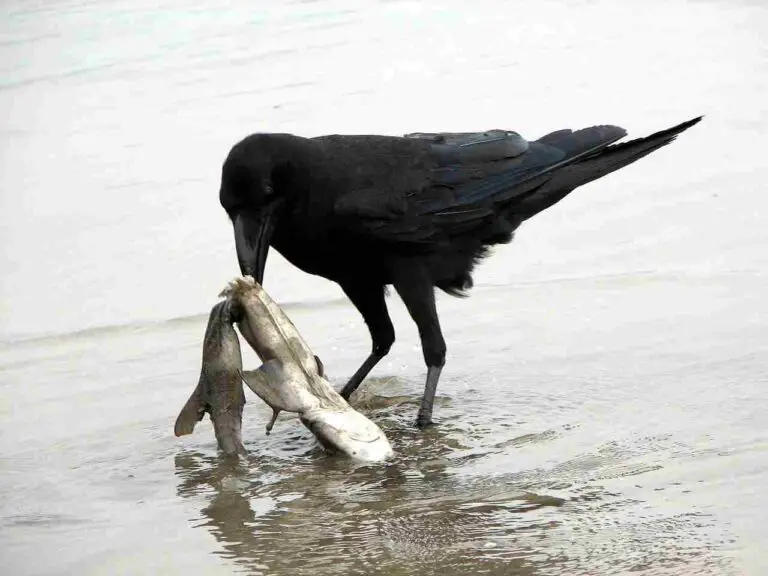9 Abiotic Factors in the Pacific Ocean and Their Functions
Abiotic factors in the Pacific Ocean are; light, water, dissolved oxygen, sediments, rocks and reef structures, nutrients, physicochemical parameters, waves and tides, as well as underwater topography.
This article discusses abiotic factors in the Pacific Ocean and their functions, as follows;
1). Light: as one of the Abiotic Factors in the Pacific Ocean
Light is an important abiotic component of the Pacific Ocean ecosystem, due to its various essential roles toward the sustainability of marine organisms and processes.
Functions of Light in the Pacific Ocean Ecosystem
Light makes critical contributions to various phenomena in the Pacific Ocean, including; photosynthesis, temperature regulation, predator-prey interaction, depth zonation, and bioluminescence.
Photosynthesis depends on light energy as a fundamental requirement to drive the process by which marine phytoplankton, macroalgae like kelp beds, and hydrophytes convert solar radiation into chemical bioenergy [2].
Phytoplankton are important primary producers in the ocean, and major occupiers of the basal level, of the marine food chain/ocean energy pyramid. These organisms provide food for zooplankton and other marine animals, ultimately providing support to the entire marine ecosystem.
Sunlight is accompanied by solar infrared radiation, which contains thermal energy. This helps to regulate the temperature of the surface layer, of the Pacific Ocean.
Solar thermal radiation warms the upper layers of the ocean, to create temperature gradients that influence ocean currents and patterns of water circulation. The ocean currents continuously translocate nutrients, heat, and organisms, in such a manner that influences the distribution of marine life.
In the ocean, light conditions impact predator-prey interactions. Some marine predatory animals, such as dolphins and large fish, use visual cues to locate and capture suitable prey. On the other hand, prey species like zooplankton may use light conditions to develop effective strategies for avoiding predators.
The penetration of light into the ocean generally varies with depth. The uppermost layer, which is referred to as the euphotic zone [8], receives sufficient sunlight for autotroph photosynthesis. Below this level, light intensity decreases rapidly, creating distinct depth zones (with various lighting conditions) within the ocean.
Different species of marine life are adapted to specific light conditions under which they thrive, leading to biotic zonation and the presence of unique communities at different depths.
Some marine organisms, such as certain species of squids, jellyfish, worms, crustaceans and fish, are bioluminescent [11]. These organisms produce their light, often for communication, predator deterrence, or prey attraction. Bioluminescence is an adaptation to the limited availability of natural sunlight in deeper ocean layers. It occurs as a result of reactions within the organism's body, mostly between luciferin molecules and oxygen [14].
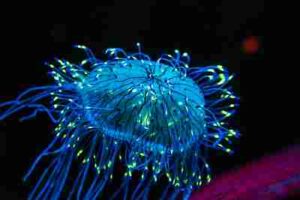
As earlier stated, light conditions within the Pacific Ocean; like in other oceans, vary with factors like depth, location, and time of day. The uppermost layer, which is the euphotic zone, extends to a depth of approximately 200 meters (656 feet). Within this zone, sunlight can penetrate and support photosynthesis. Beyond 200 meters, light availability rapidly diminishes, and there is rarely any significant light beyond 1,000 meters.
The above explanation implies that sunlight can penetrate the upper layers of the Pacific Ocean to depths of about 1,000 meters under optimal conditions. However, the critical zone for primary production and photosynthesis is typically limited to the upper 200 meters, where there is sufficient light for phytoplankton and other autotrophs to thrive.
Mysterious Red Glow Over the Pacific Ocean
The mysterious red glow observed over the Pacific Ocean, as seen in aerial photographs, was eventually attributed to fishing boats.
Fishing boats often use red lights to attract saury fish (globally known as mackerel pike). This phenomenon, while initially perplexing, has a human origin and is not related to natural bioluminescence or other natural light sources/occurrences in the ocean.
2). Water in the Pacific Ocean
Water is the primary abiotic component of the Pacific Ocean ecosystem because it is the ambient medium in which all other factors and processes occur; and it plays multiple vital roles in the sustenance of both marine life and oceanic processes.
Functions of Water in the Pacific Ocean Ecosystem
In the Pacific Ocean ecosystem, water functions as a natural habitat for marine life, a medium of transport, temperature regulation, dissolution, as well as a facilitator of physical processes or factors like buoyancy and pressure exertion.
Water in the Pacific Ocean serves as a primary habitat for a diverse range of marine organisms, including algae, (vascular and non vascular) plants, fish, mammals, reptiles, invertebrates, and microorganisms. These species depend on the physical and chemical dynamics of seawater to survive and reproduce.
Pacific seawater is also a critical medium for the transport of nutrients, dissolved gases, and other essential substances within this aquatic ecosystem. Nutrient-rich waters support primary production by autotrophs, which constitute the foundation of the marine food web.
Temperature regulation in the Pacific Ocean is facilitated by the presence of water. Its high heat capacity allows it to absorb and store heat, moderating temperature fluctuations. This, in turn, influences ocean currents and weather patterns.
The dissolution of gases like oxygen and carbon dioxide, which are vital for the respiration of marine organisms, is facilitated by water in the Pacific. Additionally, the chemical properties and dynamics of water influence the ocean's pH, and affect the health of important marine ecological factions like coral reefs.
Interaction with water and its physical properties, allows marine organisms to float or swim, and navigate within the water column. The increase in pressure with depth in the ocean, affects the vertical distribution of species as well as their adaptations to different pressure regimes.
Characteristics of Water in the Pacific Ocean
The characteristics of water in the Pacific Ocean, can be analyzed in terms of its volume, extent, surface area, depth, and age.
The Pacific Ocean is the deepest and largest ocean on Earth. It comprises about 50.1 percent of oceanic water in the world, and has an estimated volume of approximately 714 million cubic kilometers (171 million cubic miles).
In terms of extent, the Pacific Ocean spans from the Arctic region in the northern hemisphere to the Antarctic in the southern hemisphere, and lies between the continents of South America and North America on the east and Asia and Australia on the west.
Surface area of the Pacific Ocean encompasses about 46 percent of the Earth's overall water surface, and approximately 32 percent of its total surface area.
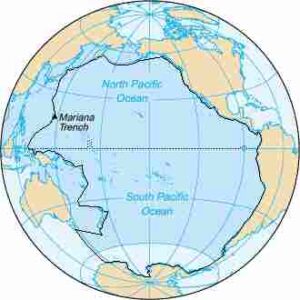
Average depth of the Pacific Ocean is about 4,280 meters (14,040 feet), which makes it the deepest of all the oceans on Earth.
The age of the water in the Pacific Ocean varies, with some water masses located at depths of 2,228 meters dating back to approximately 1,494 years, while shallower water masses are generally younger due to surface interactions like stormwater influx. These water masses are composed of a mixture of sources with ages ranging from 500 to 5,000 years.
Overview of Characteristics Related to Water in the Pacific Ocean
The Pacific Ocean is part of the five oceans of the world, along with the Atlantic Ocean, Indian Ocean, Southern Ocean, and Arctic Ocean.
Physical and chemical characteristics of water in the Pacific Ocean can vary across its vast expanse under the influence of factors such as temperature, nutrient availability/concentration, and salinity.
The Pacific Ocean has an estimated water volume of approximately 714 million cubic kilometers (171 million cubic miles). It is a saltwater body which extends from the Antarctic region in the southern hemisphere to the Arctic in the northern hemisphere and lies between the continents of Asia and Australia on the west and North America and South America on the east.
The oldest water mass mixture within the Pacific Ocean, located at a depth of about 2,228 meters, is dated at approximately 1,494 years. Age of water in the Pacific Ocean can vary with depth, mixing, and degree of surface influence.
3). Dissolved Oxygen: as one of the Abiotic Factors in the Pacific Ocean
Dissolved oxygen is a gaseous, soluble abiotic component of the Pacific Ocean ecosystem, and essential in sustaining marine life and various marine processes.
Functions of Dissolved Oxygen in the Pacific Ocean Ecosystem
Functions of dissolved oxygen in the Pacific Ocean include; support of marine respiration, aerobic decomposition, habitat zonation/delineation, facilitation of chemical reactions, and water quality indexing.
Dissolved oxygen is essential for the underwater respiration of marine organisms, including zooplankton, fish, mammals, and macroscopic invertebrates. Most marine animals extract dissolved oxygen from the seawater in order to support their metabolic processes [14].
Aerobic decomposition of organic biomass that sinks to the bottom of the ocean; is supported by dissolved oxygen as well. Microorganisms like bacteria require oxygen to break down organic substrates; an activity which in turn facilitated recycling of nutrients in the ocean.
Oxygen-rich zones within the marine water column, establish habitats for marine species that are adapted to aerobic conditions. Most Pacific Ocean inhabitants can be found in areas where dissolved oxygen concentration is above minimum levels for organic sustenance. These areas host a diverse range of fish and other mobile organisms, along with the interactions and processes which they facilitate.
Dissolved oxygen has a role to play as a reagent, product or catalyst in various chemical reactions that occur within the Pacific Ocean, including those that involve nutrients like nitrogen, sulfur and phosphorus. These reactions are highly important for continuous nutrient cycling and primary production by autotrophs.
Environment management practices that involve monitoring dissolved oxygen levels in the Pacific Ocean, can provide valuable information about water quality, abiotic trends, and the health of marine ecosystems. Low oxygen levels, for example, can be indicative of environmental issues like eutrophication or pollution.
Characteristics of Dissolved Oxygen in the Pacific Ocean
Characteristics of dissolved oxygen in the Pacific Ocean are; spatiotemporal variability, reactivity, zonation, and intricate biotic/abiotic interdependence.
Levels of dissolved oxygen in the Pacific Ocean can vary both temporally (on a time basis) and spatially (on an areal basis). The availability of oxygen can be influenced by factors such as temperature, water circulation, salinity, and biological activity.
Oxygen minimum zones (OMZs) are a prominent outcome of such variation. The Pacific Ocean, like other oceanic regions, includes areas known as oxygen minimum zones (OMZs). These zones are characterized by extremely low oxygen concentrations and often occur along the west coast of Central America, centered off the coast of Mexico. OMZs can extend for thousands of miles and impact marine ecosystems.
Waters with very low dissolved oxygen, typically less than 0.2 mg/L, are referred to as anoxic. These conditions are generally unable to support most forms of aquatic life.
Additional Information on Magnitude and Zonation of Dissolved Oxygen in the Pacific Ocean
Dissolved oxygen levels in the Pacific Ocean can vary widely, however the average minimum oxygen level in the North Pacific Ocean is about 0.5 ml/liter, with lower values occurring in certain regions such as along the west Central American coast, where oxygen concentrations fall far below 0.2 ml/liter.
The largest oxygen minimum zone (OMZ) in the Pacific Ocean is found along the Pacific coast of North and South America. This expansive zone is characterized by extremely low concentrations of oxygen.
4). Sediments in the Pacific Ocean
Sediments in the Pacific Ocean, including various types like clay, rock fragments, calcareous granular matter and ooze; serve several essential functions as abiotic components of the marine ecosystem. This section and its various subsections, discuss their functions and characteristics.
Functions of Sediments in the Pacific Ocean Ecosystem
Sediments in the Pacific Ocean function as habitat for benthic organisms, sites of nutrient cycling and carbon storage, as well as tools in sedimentary marine processes like weathering and erosion.
Pacific sediments provide a viable substrate for many benthic (bottom-dwelling) organisms, including worms, mollusks, crustaceans, and some fish species. These organisms burrow into or live upon the sediment, where they establish complex communities that contribute to the ocean's overall species richness/biodiversity.
A crucial contribution is made by sediments to the phenomenon of nutrient cycling within the Pacific ecosystem. Organic matter from autotrophs and heterotrophs that settles to the ocean floor, becomes incorporated into the sediments.
Bacteria and other microorganisms that live within the sediment, facilitate the biodegradation of this organic matter, thereby releasing nutrients like nitrogen back into the water column. These released nutrients are then accessible to primary producers for use in their photosynthetic activities.
Pacific sediments function as an effective carbon sink for the sequestration of organic carbon [7]. The accumulation of organic matter within these sedimentary materials, contributes to long-term carbon storage, help to regulate the carbon cycle in the ocean, and potentially mitigate the ecologic/environmental impacts of rising atmospheric carbon dioxide levels.
Ocean currents can transport sediments through laminar and tidal processes or wave impacts, thereby affecting patterns of coastal erosion and sedimentation. This transport mechanisms can shape coastal ecosystems, influence the distribution of minerals, and establish dynamic habitats for various marine species.
Characteristics of Sediments in the Pacific Ocean
Characteristics of sediments in the Pacific Ocean include physicochemical, biological and distributional variability, where they may occur from various sources, and in various forms as well as locations.
Types of sediments in the Pacific Ocean include calcareous clasts, clay, ferruginated clay, and ooze. Calcareous clasts and clay are dominant throughout the ocean, with calcareous sediment typically found in shallower regions and clay occupying deeper basins.
Different types of Pacific sediments have distinct geographic distributions. For instance, red clay and globigerina ooze are common types of deposits. Diatom oozes are found in a belt around Antarctica and a band across the North Pacific Ocean [5].
Overview of Occurrence and Distribution of Sediments in the Pacific Ocean
The dominant types of sediment in the Pacific Ocean include calcareous clasts and clay. Calcareous sediment is typically found in shallower parts of the ocean basin (where carbonate dissolution rates are relatively low), while clay is more abundant in the deeper sections.
The sediment that is most abundant in the North Pacific Ocean is biogenic ooze, usually comprising carbonaceous and siliceous materials from the shells of organisms like radiolaria and formaninifera.
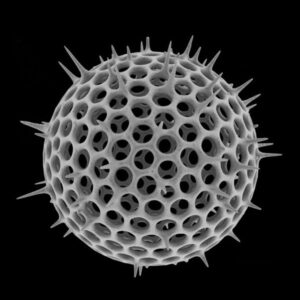
5). Rock and Reef Structures: as Abiotic Factors in the Pacific Ocean
Rock and reef structures in the Pacific Ocean and its environs, including coral reefs and rocky outcrops, serve multiple important functions as abiotic components of the marine ecosystem.
Functions of Rock and Reef Structures in the Pacific Ocean Ecosystem
Functions of rock and reef structures in the Pacific Ocean include habitat creation, biodiversity support, carbon storage, coastal protection, and scientific study.
Coral reefs, in particular, are well known for their rich biodiversity. These subecosystems provide habitat and food resources for a wide variety of marine species, including fish, invertebrates, microbes and algae. Although coral reefs cover a relatively small percentage of the Earth's overall surface area, they are estimated to host at least 25% of all marine species, as well as over 25% of all existing fish species [4].
The diverse array of species that inhabit coral reefs, contributes to the biodiversity of the Pacific Ocean.
Coral reefs and rocky outcrops often serve as important nursery grounds for many fish species. Juvenile fish find refuge within the complex structures provided by these reefs, which offer protection/concealment from predators and strong ocean currents. This protection is important for the survival of young fish until they are mature enough to venture into open waters.
Another function that can be attributed to coral reefs in the Pacific Ocean is carbon storage. These reefs, being composed of calcium carbonate structures assembled by coral polyps, play a role in the sequestration of blue carbon on Earth. They accumulate carbon mainly in the form of calcium carbonate, which contributes to long-term carbon sequestration, and potentially mitigates the effects of rising atmospheric greenhouse gas levels.
Many reefs act as natural barriers that help to protect coastlines from erosion and the damaging impacts of extreme storm surges. They intercept and dissipate wave energy, preventing shoreline erosion and safeguarding coastal communities as well as infrastructure.
The geological framework of coral reefs provides valuable insights into the history, past environmental conditions and evolution of the Earth. Coral growth patterns and the types of corals present can reveal information about past sea levels, ocean chemistry, and regional temperatures. Similar insights can be gained through the study of rocks.
Overview of Reefs and Geologic Characteristics of the Pacific Ocean
There are coral reefs in the Pacific Ocean, which is home to some of the world's most extensive and diverse reef ecosystems, including the Great Barrier Reef of Australia, the coral reefs of the Line Islands, the Northwestern Hawaiian Islands reefs, and several others.
The Great Barrier Reef of Australia, in the Pacific Ocean and off the northeastern coast of Australia, is one of the most famous and extensive coral reef systems in the world.
The geology of the Pacific Ocean is relatively complex and can be traced to the evolution of the ocean from the Mesozoic era when it formed from the Panthalassic Ocean [6]. The Pacific Ocean's geology is an outcome of various processes including the movement of tectonic plates, subduction zones, and the creation of the largest oceanic plate on Earth, the Pacific Plate.
Coral reefs and rocky structures within the Pacific Ocean are an integral part of its geological and ecological diversity.
6). Nutrients in the Pacific Ocean
Nutrients in the Pacific Ocean, which occur in various forms including nitrates, are essential abiotic components of the marine ecosystem, and have several crucial functions, some of which are highlighted in the subsection below.
Functions of Nutrients in the Pacific Ocean Ecosystem
Functions that can be attributed to nutrients in the Pacific are; primary production, ecosystem sustenance, resource conservation, and facilitation of biological processes.
Nutrients, particularly nitrogen, serve as vital requirements for primary producers like phytoplankton. Phytoplankton are microscopic marine autotrophs that occupy a prominent position at the base of the ocean food chain. These organisms rely on nitrate, among other nutrients, to carry out photosynthesis and convert inorganic materials into organic matter in the presence of sunlight.
The above explanation implies that nutrients are key drivers of ecosystem productivity in the Pacific. The availability of these nutrients, influences the growth and abundance of phytoplankton, which, in turn, impacts the dynamics of the entire ocean food web, from zooplankton to fish to marine mammals.
Nutrients are cycled through the marine ecosystem in a process known simply as nutrient cycling, or biogeochemical cycling. This cycling ensures that essential resources are continuously recycled, making them available to different processes and organisms at various trophic levels. Continuous circulation of nutrients helps maintain the health and functionality of the ecosystem.
Various biological processes in the Pacific Ocean depend heavily on nutrients. Nitrogen, for example, is a critical component of both nucleotides and amino acids [13], which are essential for the growth, reproduction, and survival of all marine life.
Overview of Nutrient Availability and Impacts in the Pacific Ocean
The Pacific Ocean typically has higher concentrations of nutrients in its deep waters compared to the Atlantic Ocean. The reason for this higher availability is because Pacific deep water has been subject to more evolutionary complexity and modification, that have enabled it to accumulate nutrients from processes like the oxidation of organic matter.
In addition, upwelling and circulation patterns in the Pacific are very active, and can bring nutrient-rich waters from the deep ocean to the surface, while assimilating inputs from external sources, thereby enhancing nutrient availability.
The limiting nutrient in the Pacific Ocean is mainly iron, whose availability inhibits biological production in some regions of the ocean. Iron limitation affects both phytoplankton growth and primary production in certain areas of the equatorial Pacific, where iron concentrations are low. This limitation is notable in distinct regions known as High Nutrient Low Chlorophyll (HNLC) areas [12].
Other limiting nutrients in the Pacific Ocean are phosphorus and silica.
7). Physicochemical Parameters: as Abiotic Factors in the Pacific Ocean
Physicochemical parameters in the Pacific Ocean, including physical variables such as temperature, pH, electrical conductivity (EC), and chemical variables like dissolved oxygen and organic matter concentrations, are fundamental abiotic components of the marine ecosystem.
These parameters play critical roles in establishing and maintaining the physical and chemical environment of the ocean, while influencing marine life and ecosystem processes.
Functions of Physicochemical Parameters in the Pacific Ocean Ecosystem
Functions of physicochemical parameters in the Pacific Ocean Ecosystem include growth regulation, maintenance of organic health, and biodiversity.
Examples of physicochemical parameters in the Pacific Ocean are; temperature, pH, electrical conductivity (EC), and dissolved oxygen (DO). Each of these is discussed briefly below;
Temperature is a key factor that influences the distribution and adaptive features of marine organisms. It affects their growth, reproduction, metabolic rates, growth, and long term biological performance. Temperature gradients in the ocean ecosystem, also drive ocean currents, which, in turn, influence the distribution of planktonic organisms and nutrients, thereby impacting the aquatic food web.
pH levels in seawater are another essential physicochemical parameter for maintaining the dynamics of marine organisms, especially those with shells, skeletons or other bodily secretions comprising of carbonate compounds, like calcareous corals, mollusks, and some zooplankton [3].
Changes in pH, such as those resulting from ocean acidification due to increased carbon dioxide (CO2) absorption/production, can disrupt the formation and maintenance of calcium carbonate structures, posing a threat to these organisms as well as to carbonate structures and microecosystems like reefs.
Electrical Conductivity (EC), is an estimate of the ability of the water to conduct electrical current, which is determined by the concentration of dissolved salts and multiple ions. This variable provides insights into the salinity of seawater, to which it is closely related. Salinity affects the density of seawater, which, in turn, influences ocean circulation patterns and vertical nutrient mixing.
Dissolved Oxygen (DO), as discussed earlier, is critical for the respiration of marine organisms, from microbial zooplankton to large fish. It is a critical parameter used in the assessment of water quality. Oxygen concentrations tend to vary with depth and temperature, so that they affect the distribution of species and delineate the location of oxygen minimum zones, where oxygen concentrations (and organic processes) are exceptionally low.
Organic matter in seawater can sometimes be analyzed as a physicochemical parameter, although it is more biochemical in nature. Organic resources serve as a source of nutrients and energy for marine organisms. Phytoplankton, for example, can utilize organic matter as a carbon source for photosynthesis. The breakdown of organic matter influences nutrient cycling trends in the marine ecosystem.
Key Points Raised in the Discussion of Pacific Physicochemical Parameters
Physicochemical parameters are essential for evaluating the physical and chemical conditions of the Pacific Ocean, which, in turn, are behind the distribution, adaptation, and sustenance of marine organisms.
Changes in these parameters, which could be in the form of ocean acidification or temporal variations in temperature, can have profound impacts on marine ecosystems and their biodiversity.
Studying and monitoring these parameters are critical measures for assessing the vitality and resilience of Pacific Ocean ecosystems, especially in the face of environmental changes like climate change, and intrusive human activities.
8). Waves and Tides in the Pacific Ocean
Waves and tides in the Pacific Ocean are closely tied abiotic components of the marine environment, and influence various ecological processes, marine life distribution, and nutrient cycling. Some of their functions within this ecosystem are discussed in the following subsection.
Functions of Pacific Waves and Tides
Pacific waves and tides help in the transport of nutrients, distribution of species, transport of sediments, erosion, deposition, and oxygenation.
An important role is played by waves in the mixing and churning of the ocean's surface waters. This vertical mixing function, helps to bring nutrient-rich deep waters to the surface, and provides essential elements like nitrogen, sulfur and phosphorus to phytoplankton. Phytoplankton, in turn, serve as primary energy sources for the biotic components of the Pacific Ocean.
Wave patterns and tidal currents can both influence the distribution of marine species. For instance, some species of invertebrates and fish utilize tidal currents for spawning and larval dispersal. The navigation and activities of prey and predators can also be influenced by tidal cycles.
Tides and waves are jointly responsible for the transport of sediments along coastlines. This process modifies coastal landforms, and contributes to the formation of habitats like beaches, tidal flats and estuaries. Sediment transport also affects the distribution and behavior of benthic organisms.
Coastal erosion and sediment deposition are both influenced by wave energy and tidal forces. Erosion can impact coastal ecosystems, while deposition can establish new habitats for various organisms.
Tidal processes help oxygenate coastal waters by promoting the exchange of gases between the atmosphere and the surface layer of the ocean. This oxygenation mechanism is vital as a medium for oxygen influx from external sources, to support the respiration of marine life.
Tides in the Pacific Ocean
Tides in the Pacific Ocean exhibit a range of characteristics, including; diurnal variation, relatively small range, and cyclic regularity.
The Pacific Ocean experiences both mixed tides (two high tides with a slight low tide between them, followed by a deep low) and diurnal (once-a-day cycle) tides.
Over a period of one day, there are approximately two tidal cycles, meaning two high waters and two low waters.
Tidal ranges within the Pacific vary but are generally small in comparison to some other ocean regions. For instance, the tidal range at Tahiti margin is about 1-2 foot (0.3-0.6 meters) while at Cape Horn, it never exceeds 6 feet (1.8 meters). Other estimates include Honolulu coast at about 2 feet (0.6 meters), and Yokohama at 5 feet (1.5 meters) or lower.
Neap tides and spring tides are part of the regular tidal cycle in the Pacific, and occur approximately twice per month.
Understanding such tidal patterns is crucial for ecologists and marine scientists studying the complex interactions within the Pacific Ocean.
9). Underwater Topography: as one of the Abiotic Factors in the Pacific Ocean
The underwater topography of the Pacific Ocean is characterized by a broad and diverse range of geological features, that significantly influence marine ecosystems and the distribution/adaptation of marine life. Some key aspects of the Pacific Ocean's topography and their functions as abiotic components of the ecosystem, are highlighted below.
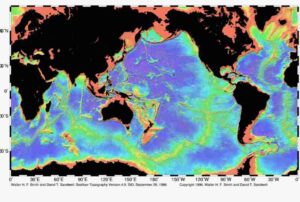
Aspects and Functions of Pacific Underwater Topography
Underwater topographic features in the Pacific Ocean include; continental slopes, abyssal plains, volcanic seamounts and islands, trenches and oceanic ridges, as well as submarine canyons.
Continental slopes in the Pacific Ocean are representative of the transition between the continental shelf and the deep ocean. These slopes, which drop from about 200 meters to several thousand meters over a relatively short distance, establish varying habitats for marine species across their profiles. They offer ecologic niches for both shallow-water and deep-sea organisms, thereby contributing to high regional biodiversity.
The distinctively flat abyssal plains of the Pacific Ocean, which are typically found at depths of 3,000 to 6,000 meters [9], serve as important zones for nutrient cycling. Organic material and nutrients usually settle on these plains, where they provide a food source for deep-sea organisms. The topography of abyssal plains also influences the flow of deep-ocean currents.
Numerous volcanic seamounts and islands can be found within the Pacific Ocean, and are among its topographic features. These underwater mountains and islands serve as important breeding grounds and refuges for various marine species, including seabirds, pinnipeds and sea turtles. Seamounts may foster upwelling of nutrient-rich water, which support fish and other marine life.
Trenches are prominent features of the Pacific Ocean's topography, especially in subduction zones. These geomorphic areas, such as the Mariana Trench in the western Pacific, are known for their extreme depths and unique conditions [1]. They support specialized adaptations of life forms that can withstand the immense pressure and low light intensity of the deep sea.
Oceanic ridges, like the East Pacific Rise, can be described as underwater mountain ranges that are sites of geological activity. They are involved in the creation of new oceanic crust, which influences the chemical composition of the seawater as well as the distribution of hydrothermal vent zones.
Lastly, submarine canyons, such as Monterey Canyon, are topographical features that cut through the continental slope and shelf. These canyons function as conduits for the transport of sediments, organic matter and nutrients from shallower to deeper waters, thereby influencing the distribution of marine life.
Conclusion
Abiotic factors in the Pacific Ocean are;
1. Light
2. Water
3. Dissolved Oxygen
4. Sediments
5. Rocks and Reef Structures
6. Nutrients
7. Physicochemical Parameters
8. Waves and Tides
9. Underwater Topography
References
1). Du, M.; Peng, X.; Zhang, H.; Ye, C.; Dasgupta, S.; Li, J.; Li, J.; Shuangquan, L.; Xu, H.; Chen, C.; Jing, H.; Xu, H.; Liu, J.; He, S.; He, L.; Cai, S.; Chen, S.; Ta, K. (2021). "Geology, environment and life of the deepest part of the world’s ocean." The Innovation 2(2). Available at: https://doi.org/10.1016/j.xinn.2021.100109. (Accessed 22 September 2023).
2). Dunton, K. H. (2007). "Stable isotope (13C) and O2 micro-optode alternatives for measuring photosythesis in seaweeds." Marine Ecology Progress Series 329:85-97. Available at: https://doi.org/10.3354/meps329085. (Accessed 22 September 2023).
3). Feely, R.; Fabry, V. J.; Guinotte, J. M. (2008). "Ocean acidification of the North Pacific Ocean." Available at: https://www.semanticscholar.org/paper/Ocean-Acidification-of-the-North-Pacific-Ocean-Feely-Sabine/6f6abb2b2a4a682d001283dc943c94f56fb0692b. (Accessed 22 September 2023).
4). Fisher, R.; O'Leary, R.; Lowchoy, S.; Mengersen, K.; Knowlton, N.; Brainard, R.; Caley, M. J. (2015). "Species Richness on Coral Reefs and the Pursuit of Convergent Global Estimates." Current Biology 25(4). Available at: https://doi.org/10.1016/j.cub.2014.12.022. (Accessed 22 September 2023).
5). Koizumi, I.; Yamamoto, H. (2018). "Diatom ooze and diatomite-diatomaceous sediments in and around the North Pacific Ocean." JAMSTEC Report of Research and Development 27:26-46. Available at: https://doi.org/10.5918/jamstecr.27.26. (Accessed 22 September 2023).
6). Lin, Y.-A.; Colli, L.; Wu, J. (2022). "NW Pacific‐Panthalassa Intra‐Oceanic Subduction During Mesozoic Times From Mantle Convection and Geoid Models." Wiley, Geochemistry, Geophysics, Geosystems 23(11). Available at: https://doi.org/10.1029/2022GC010514. (Accessed 22 September 2023).
7). Miyajima, T.; Hamaguchi, M.; Hori, M. (2021). "Evaluation of the baseline carbon sequestration rates of Indo‐Pacific temperate and tropical seagrass meadow sediments." Ecological Research 37(1). Available at: https://doi.org/10.1111/1440-1703.12263. (Accessed 22 September 2023).
8). Nefiodov, A. V. (2020). "UNIVERSAL PATTERNS OF MATTER AND ENERGY FLUXES IN LAND AND OCEAN ECOSYSTEMS." Russian Journal of Ecosystem Ecology 5(2). Available at: https://doi.org/10.21685/2500-0578-2020-2-6. (Accessed 22 September 2023).
9). Priede, I. G.; Drazen, J. C.; Kuhnz, L.; Fabian, D. (2019). "Abyssal demersal fishes recorded at station M (34°50′N, 123° 00′W, 4100 m depth) in the northeast Pacific Ocean: An annotated check list and synthesis." Deep Sea Research Part II Topical Studies in Oceanography 173:104648. Available at: https://doi.org/10.1016/j.dsr2.2019.104648. (Accessed 22 September 2023).
10). Rees, J.-F.; De Wergifosse, B.; Noiset, O.; Dubuisson, M.-N.; Janssens, B.; Thompson, E. M. (1998). "The Origins of Marine Bioluminescence: Turning Oxygen Defence Mechanisms Into Deep-Sea Communication Tools." Journal of Experimental Biology 201(Pt 8):1211-21. Available at: https://doi.org/10.1242/jeb.201.8.1211. (Accessed 22 September 2023).
11). Srivastava, A.; Kativar, K. (2021). "The Ecology of Bioluminescence." Bioluminescence. Available at: https://doi.org/10.5772/intechopen.96636. (Accessed 22 September 2023).
12). Venables, H.; Moore, C. M. (2010). "Phytoplankton and light limitation in the Southern Ocean: Learning from high-nutrient, high-chlorophyll areas." Journal of Geophysical Research Atmospheres 115(C2). Available at: https://doi.org/10.1029/2009JC005361. (Accessed 22 September 2023).
13). Yang, X.; Nian, J.; Xie, Q.; Feng, J.; Zhang, F.; Jing, H.; Zhang, J.; Liang, Y.; Peng, J.; Wang, G.; Qian, Q.; Zuo, J. (2016). "Rice Ferredoxin-Dependent Glutamate Synthase Regulates Nitrogen-Carbon Metabolomes and Is Genetically Differentiated between japonica and indica Subspecies." Molecular Plant 9(11). Available at: https://doi.org/10.1016/j.molp.2016.09.004. (Accessed 22 September 2023).
14). Zhang, W.; Cao, Z.-D.; Peng, J.-L.; Chen, B.-j.; Peng, Fu, S.-J. (2010). "The effects of dissolved oxygen level on the metabolic interaction between digestion and locomotion in juvenile southern catfish (Silurus meridionalis Chen)." Comparative Biochemistry and Physiology Part A Molecular & Integrative Physiology 157(3):212-9. Available at: https://doi.org/10.1016/j.cbpa.2010.06.184. (Accessed 22 September 2023).

